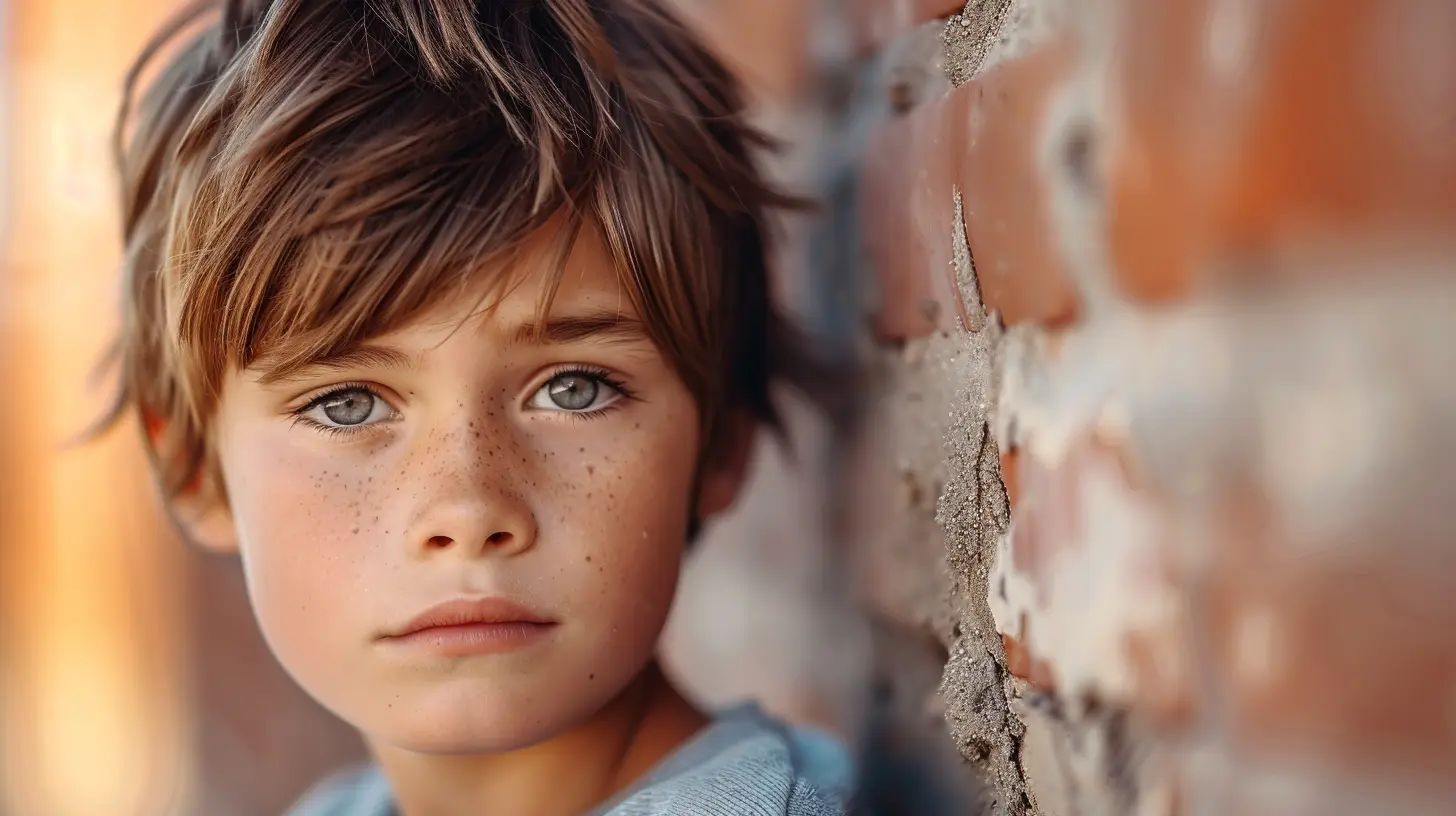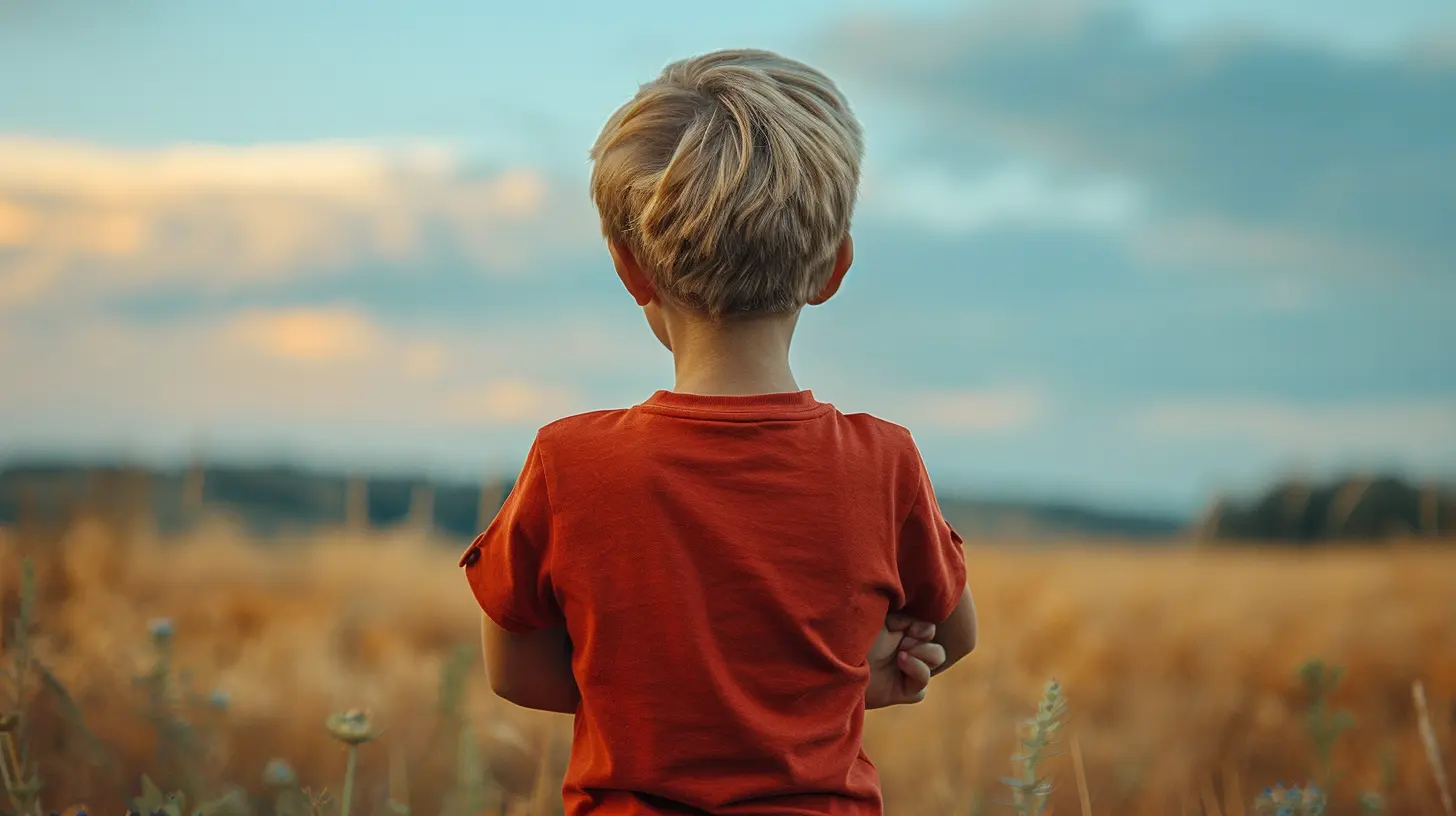Navigating Peer Pressure While Maintaining Self-Esteem
1 July 2025
Peer pressure—those two innocent words can pack a punch, right? It's like standing on a tightrope, balancing your inner voice while the world chants to sway you. Whether you're a parent guiding your child through stormy teen years or someone trying to reflect on your own experiences, knowing how to maintain self-esteem under peer pressure is like holding onto an umbrella during a hurricane. One wrong move, and you're drenched.
So, how do we teach our kids (or ourselves, let's be real) to resist succumbing to the crowd and still feel good about who they are? Let’s break it down. 
What Exactly Is Peer Pressure?
Imagine this: you're at a party, and everyone’s diving headfirst into a pool of something you're hesitant about—it could be alcohol, gossip, or even a TikTok dance you find cringy. Someone nudges you and says, “C’mon, don’t be a bore.”Congratulations, you've just met peer pressure.
Peer pressure is the sneaky force that pushes people to fit in, to conform, to do things just because “everyone else is doing it.” For kids and teens, it’s amplified tenfold because the stakes feel enormous. Who doesn’t want to be accepted, right? But here's the kicker—giving in often comes at the cost of authenticity and self-esteem. 
How Peer Pressure Erodes Self-Esteem
Think about self-esteem as the foundation of a house. It’s what keeps everything steady. The moment someone tears at who you are or makes you question yourself, it’s like cracks forming in that foundation.When kids (or adults) give in to peer pressure, they're essentially silencing their inner compass to please others. Do that enough times, and you start losing trust in your own judgment. You start thinking, "Maybe who I am isn’t good enough."
That’s like taking a hammer to that foundation. And once the cracks start, it takes effort to repair them. 
Recognizing Peer Pressure: Subtle vs. Blunt
Not all peer pressure wears neon lights. Sometimes, it’s subtle, like a raised eyebrow or a dismissive laugh when you say no. Other times, it’s blunt—somebody outright challenges or dares you.Here are a few ways peer pressure manifests:
1. The Flattery Trap: “You’d look so much cooler if you did this.”
2. Fear of Missing Out (FOMO): “Everyone else is going. You’ll feel left out.”
3. Guilt Tripping: “Don’t ruin the fun for the rest of us.”
4. Direct Dares: “Prove it. You’re not scared, are you?”
Recognizing these subtle and overt signs is the first step to tackling them head-on. 
The Ripple Effect of Saying ‘Yes’
Let’s be real—giving in to peer pressure might feel like the easy route at first. But every 'yes' has a consequence.Say your teen succumbs to pressure and steals a vape from a convenience store because their friends egged them on. The initial thrill might make them feel invincible. But guilt often sinks in later. Or worse, if they’re caught, the humiliation could stick with them for years.
It’s like throwing a pebble into still water—the ripples from that one decision spread far and wide.
The Beauty of Saying ‘No’
But here’s the flip side: saying “no” isn’t just about resisting temptation. It’s about reclaiming power.When you or your child says “no” to something they’re not comfortable with, they’re sending a message—not just to those around them, but to themselves. That message is, "I value my voice."
Sure, it might feel like standing alone on occasion. But wouldn’t you rather stand tall and alone than blend into the crowd and lose yourself?
Practical Tips for Parents
Alright, parents, here’s where you come in. You want to arm your kids with the strength to resist peer pressure without sounding like a broken record, right? Try these:1. Open Conversations: Don’t wait for a crisis to talk about peer pressure. Sprinkle the topic into day-to-day chats—like when a TV character succumbs to peer pressure, use it as a teaching moment.
2. Role-Playing: Think of this as acting practice but without the Oscars. Play out scenarios where they might face pressure, and coach them on how to respond confidently.
3. Boost Their Confidence: Praise their individuality. When they know they’re valued for being themselves, they’re less likely to seek validation from others.
4. Teach Them Perspective: A high school friend’s opinion isn’t life or death. Help them see the bigger picture—will this matter in two months? Two years? Probably not.
5. Encourage Positive Friendships: Surrounding themselves with friends who respect their choices reduces the chances of facing toxic pressure in the first place.
Practical Tips for Kids and Teens
Okay, kids, this part’s for you. Facing peer pressure? Here’s how to handle it like a boss:1. Use Humor: Deflect pressure with a joke. If someone says, “Try this—it’s cool,” you could reply with, “Cool? Nah, I’m already too cool.” Boom! Conversation ended.
2. Blame Someone Else (Yes, Really): “My mom will ground me for life if I do.” It’s a classic excuse, but it works. And hey, your parents won’t mind being the bad guy if it keeps you safe.
3. Find Your Tribe: Hang out with people who like you for you—the ones who don’t make you feel small just to make themselves feel big.
4. Learn The Art of Saying ‘No’: Practice saying “no” firmly without wavering. It’s a skill, but trust me, it gets easier.
5. Trust Your Gut: If it doesn’t feel right, it isn’t. That funny feeling in your stomach? Listen to it.
Self-Esteem: The Silent Superpower
Self-esteem isn’t about thinking you’re better than everyone else. It’s about knowing that you’re enough. Period.When kids have high self-esteem, they’re less likely to buckle under peer pressure because they trust their own judgment. They stop seeking external validation and start focusing on what makes them happy.
It’s like wearing armor—you still feel the impact of the world around you, but it doesn’t penetrate deeply.
Teaching by Example
Kids don’t just listen to what you say; they watch what you do.Ever notice how a toddler mimics their parent’s every move? That doesn’t stop when they grow up. They see how you handle conflicts, choices, and even your own encounters with societal pressures.
So, model the behavior you want them to adopt. Let them see you standing firm in your beliefs, even when it’s uncomfortable. Show them it’s okay to prioritize their happiness over someone else’s approval.
Why This Matters Now More Than Ever
Let’s not ignore the elephant in the room—social media.For kids today, peer pressure doesn’t stop when they leave school. It follows them into their bedrooms, demanding likes and comments to validate their worth.
Teaching resilience against peer pressure in the age of Instagram and Snapchat is no small feat. But it’s also never been more critical.
Because let’s face it—the only validation someone truly needs is from themselves.
Final Thoughts
Navigating peer pressure while maintaining self-esteem is like walking a labyrinth. There are twists, turns, and dead ends. But with the right tools, anyone can find their way through.Teach yourself (and your kids) that it’s okay to be different, to stand out, to say, “No, thanks.” After all, life isn’t about blending in—it’s about shining in your own unique way.
And remember, self-esteem isn’t built in a day. It’s a daily practice, a lifelong journey. But every step forward is a victory.
all images in this post were generated using AI tools
Category:
Building Self EsteemAuthor:

Liam Huffman
Discussion
rate this article
1 comments
Solaria Potter
This article raises important points about the nuances of peer pressure and self-esteem. I'm curious about how different parenting styles influence children's resilience in these situations. What strategies can we adopt to empower our kids even further?
July 5, 2025 at 4:03 AM

Liam Huffman
Thank you for your insightful comment! Parenting styles play a crucial role in shaping resilience. Strategies like open communication, modeling self-acceptance, and encouraging decision-making can empower kids to navigate peer pressure with confidence.


